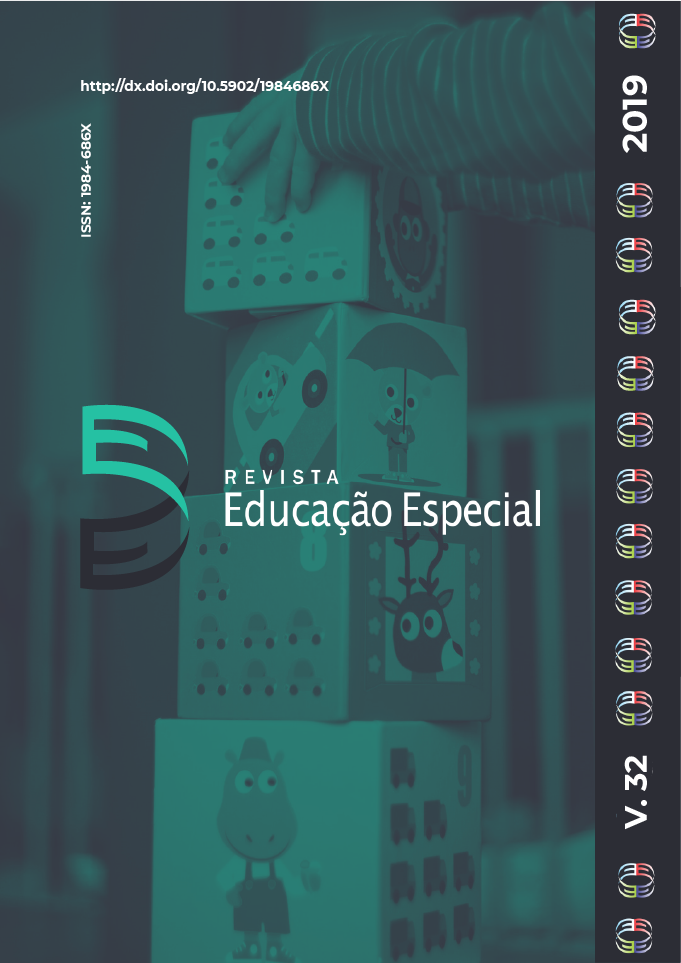Garment Recognition Prototype of Mobile Application for Blind People
DOI:
https://doi.org/10.5902/1984686X32551Keywords:
Digital Accessibility, Blindness, Mobile Devices.Abstract
Blind people are usually limited to routine tasks that depend exclusively on the perception of light, such as choosing a specific dress, color or style, among many other related activities. Blind people can, through touch, have information about texture and shape of clothing. However, details such as colors, designs, and style become difficult to identify without the help of a person who has vision. In this context, this paper presents a prototype of a mobile application that allows blind people to identify their clothing. The methodology used was the dissertation-project.The identification of the clothing is accomplished by means of the recognition of standards, with the use of the OpenCV library. The application allows the registration of images of the clothes, as well as an audio description. The application allows blind people to have more autonomy in the activity of choosing clothes, being able to combine patterns of colors. The dress register with the audio description can be made by the circle of friends of the blind people, who will be able to follow all the changes of fashion and go changing this information as needed, since fashion, styles and trends are always changing Through the application, the blind person can have autonomy of choice regarding their clothes, allowing them to choose them alone, and can use the application at any time or place for portability. This paper has also shown how blind people can have a better quality of life through a clothing identification application. Technology empowers people with disabilities and represents an expanding market.Downloads
References
ANDROID. Ativar o talkback. Disponível em: <https://support.google.com/accessibility/android/answer/6007100?hl=pt-BR>. Acesso em: 02 ago. 2017.
CAMPÊLO, R., TABOSA, M. M.; CARNEIRO, A. H. Inclusão digital de deficientes visuais: O uso da tecnologia assistiva em redes sociais online e celulares, 2011. Anais do Computer on the Beach, p. 109–118.
EMAG. Programa emag: modelo de acessibilidade de governo eletrônico, 2011. Disponível em: <http://emag.governoeletronico.gov.br/>. Acesso em 02 ago. 2017.
GONZALEZ, R. C. W. R. E. Processamento de Imagens Digitais. Rio de Janeiro, Edgard, 2000..
IBGE. Instituto Brasileiro de Geografia e Estatística. Censo Demográfico de 2010. 2010. Disponível em: <http://www.ibge.gov.br>. Acesso em 10 set. 2017.
IDC. International Data Corporation. Smartphone os market share. 2017. Disponível em: <http://www.idc.com/prodserv/smartphone-os-market-share.jsp>. Acesso em 02 ago. 2017.
LIMA, F. J. D. Em defesa da áudio-descrição: contribuições da convenção sobre os direitos da pessoa com deficiência. Revista Brasileira de Tradução Visual, 1(1), 2009.
LIMA, F. J. D; LIMA, R. A. F. Lições basilares para a formação do áudio-descritor empoderativo. Revista Brasileira de Tradução Visual, 11, 2012.
MACHADO, D. R.; MACHADO, R. P.; CONFORTO. Dispositivos móveis e usuários cegos: recomendações de acessibilidade em discussão. Nuevas Ideas en Informática Educativa TISE, 2014.
MELO, D. A. G.; MATHIAS, I. M.; DIAS, A. H. Reconhecimento de padrões em tecnologia portável: um estudo de caso. Revista de Informática Teórica e Aplicada, 22(1):119–127, 2014. DOI: https://doi.org/10.22456/2175-2745.48395
MIRANDA, A. M. D. Reconhecimento de frutas por visão computacional utilizando um classificador fuzzy embarcado. Technical Report, Instituto Federal do Espírito Santo, Coordenadoria de Pós-Graduação em Engenharia Elétrica, 2014. Disponível em: <http://www.ppgee.vi.ifes.edu.br/wp-content/uploads/2014/10/Acervo-
-Adriano-Machado-Miranda.pdf>. Acesso em 10 set. 2017.
OPENCV. Opencv tutorials. Disponível em: <http://docs.opencv.org/2.4/doc/tutorials/tutorials.html>. Acesso em 02 ago. 2017.
SILVEIRA, C.; HEIDRICH, R. O.; BASSANI, P. B. Avaliação das tecnologias de softwares existentes para a inclusão digital de deficientes visuais através da utilização de requisitos de qualidade. Anais do Simpósio Brasileiro de Informática na Educação, 2007.
SYNDER, J. Audio description: The visual made verbal. Elsevier, 2005. DOI: https://doi.org/10.1016/j.ics.2005.05.215
Downloads
Published
How to Cite
Issue
Section
License
Declaration of originality
We declare that all articles present in the journal Revista Educação Especial (UFSM) are originals and were not submitted for publishing on any other publication, as a whole or a fraction. We also declare that, after being published by Revista Educação Especial (UFSM), a paper will not be submitted to another journal within two years. After this time, our journal transfers the publishing rights to the authors, with a permit granted by the Editorial Council.
We also acknowledge that the originals’ submission to Revista Educação Especial (UFSM) implies on a transference of copyright for physical and digital publishing to the journal. In case of noncompliance, the violator will receive sanctions and penalties predicted by the Brazilian Copyright Protection Law (n. 9610, dated 19/02/98).







